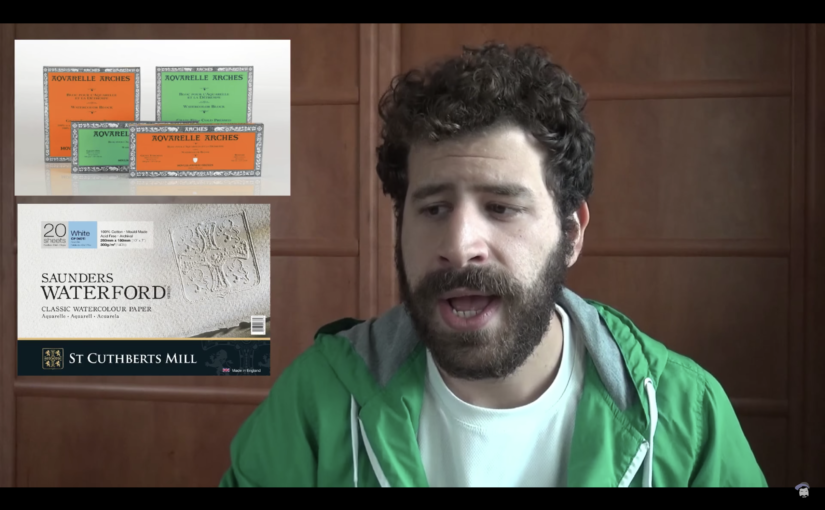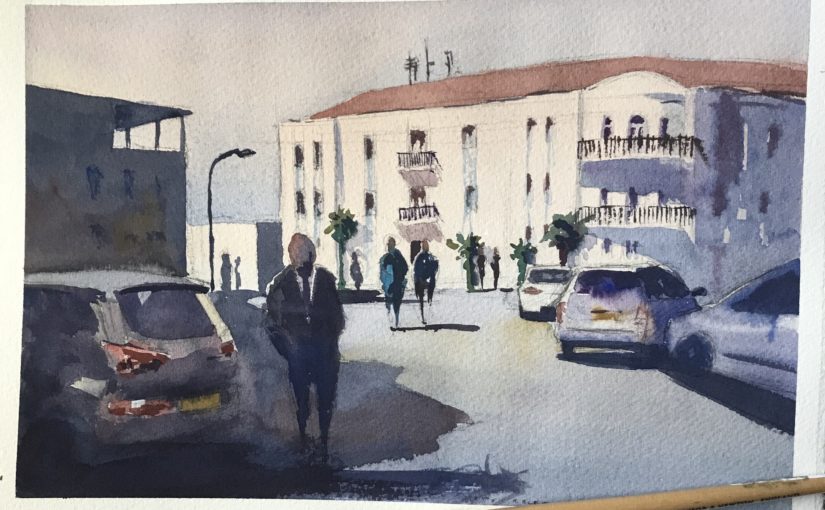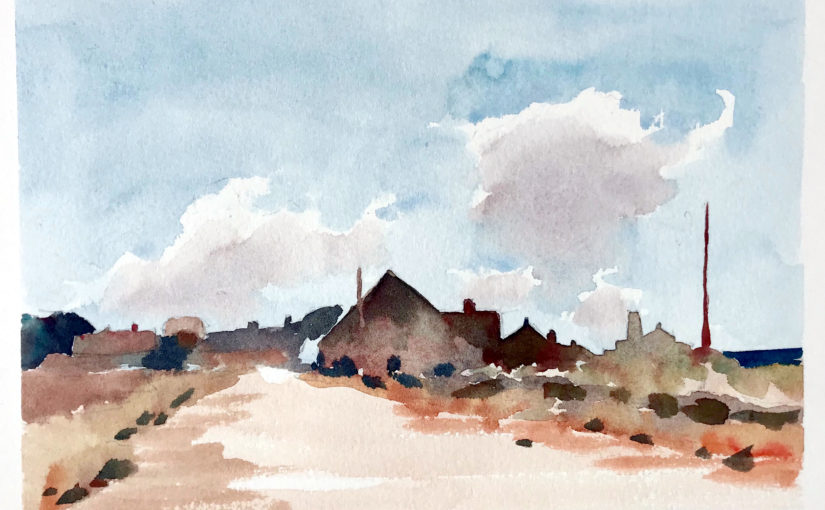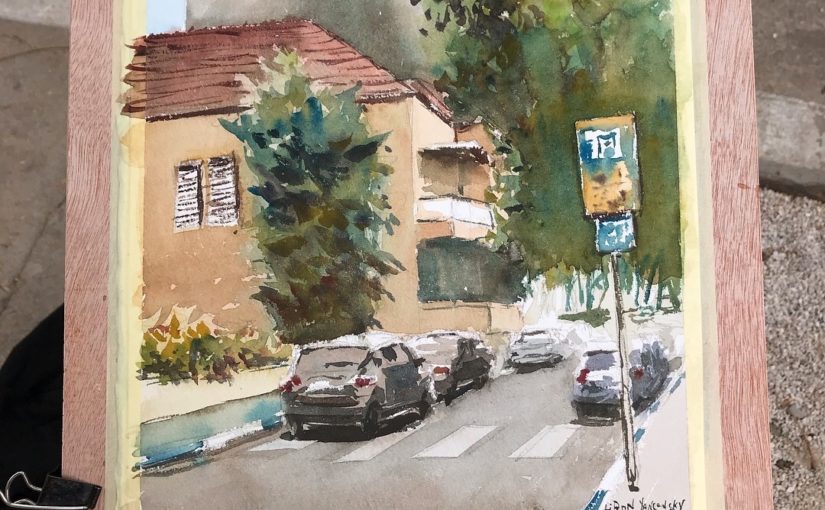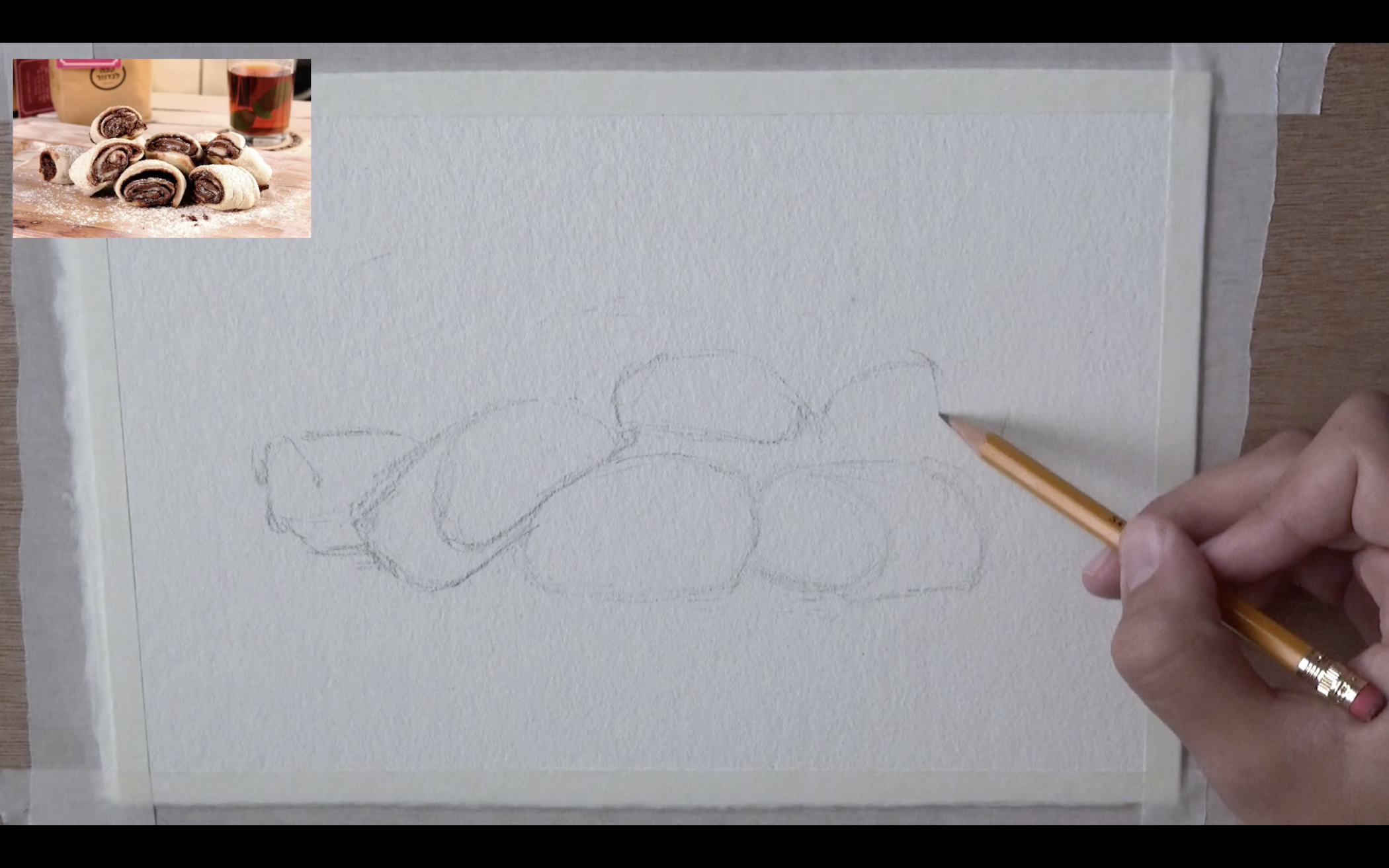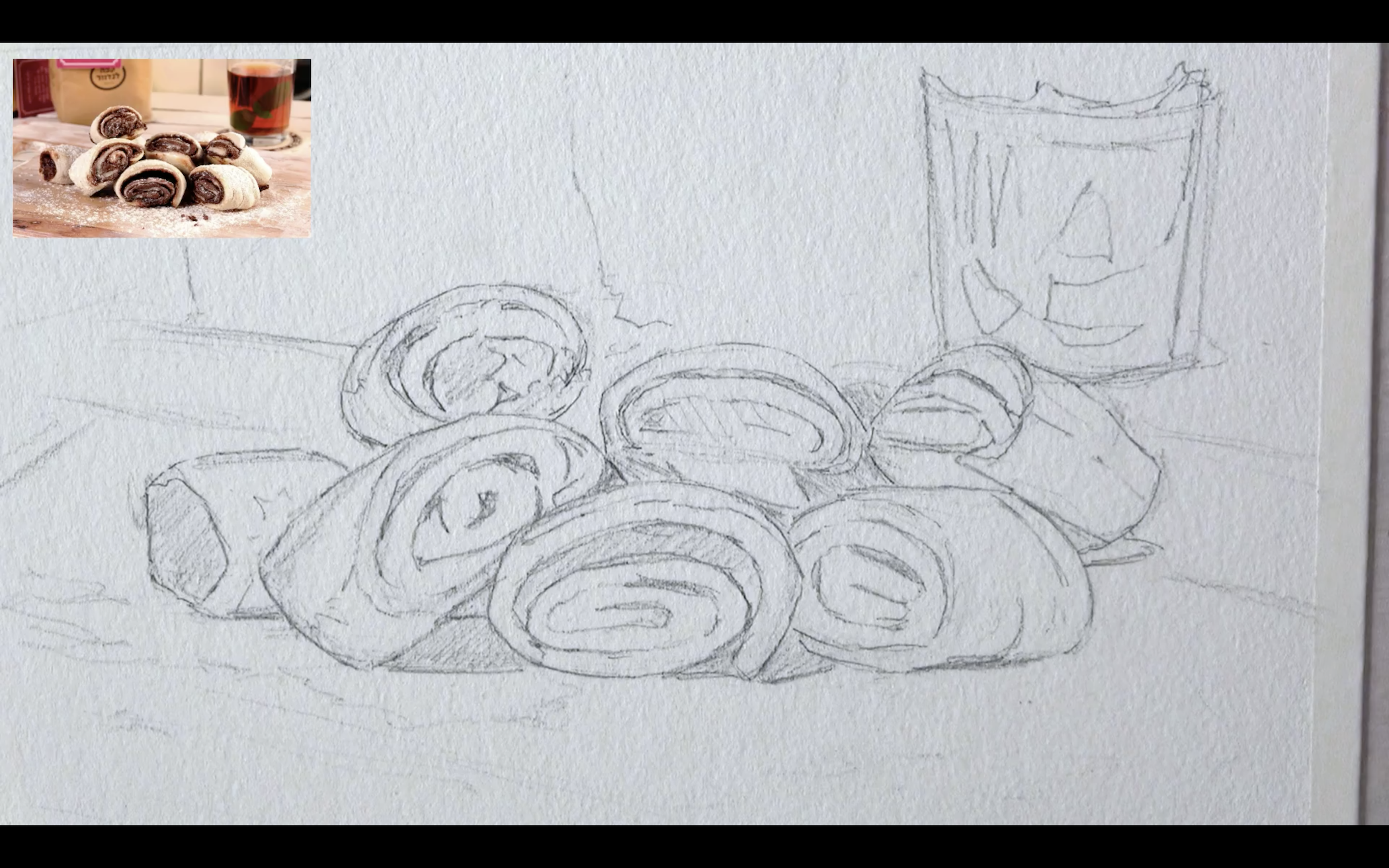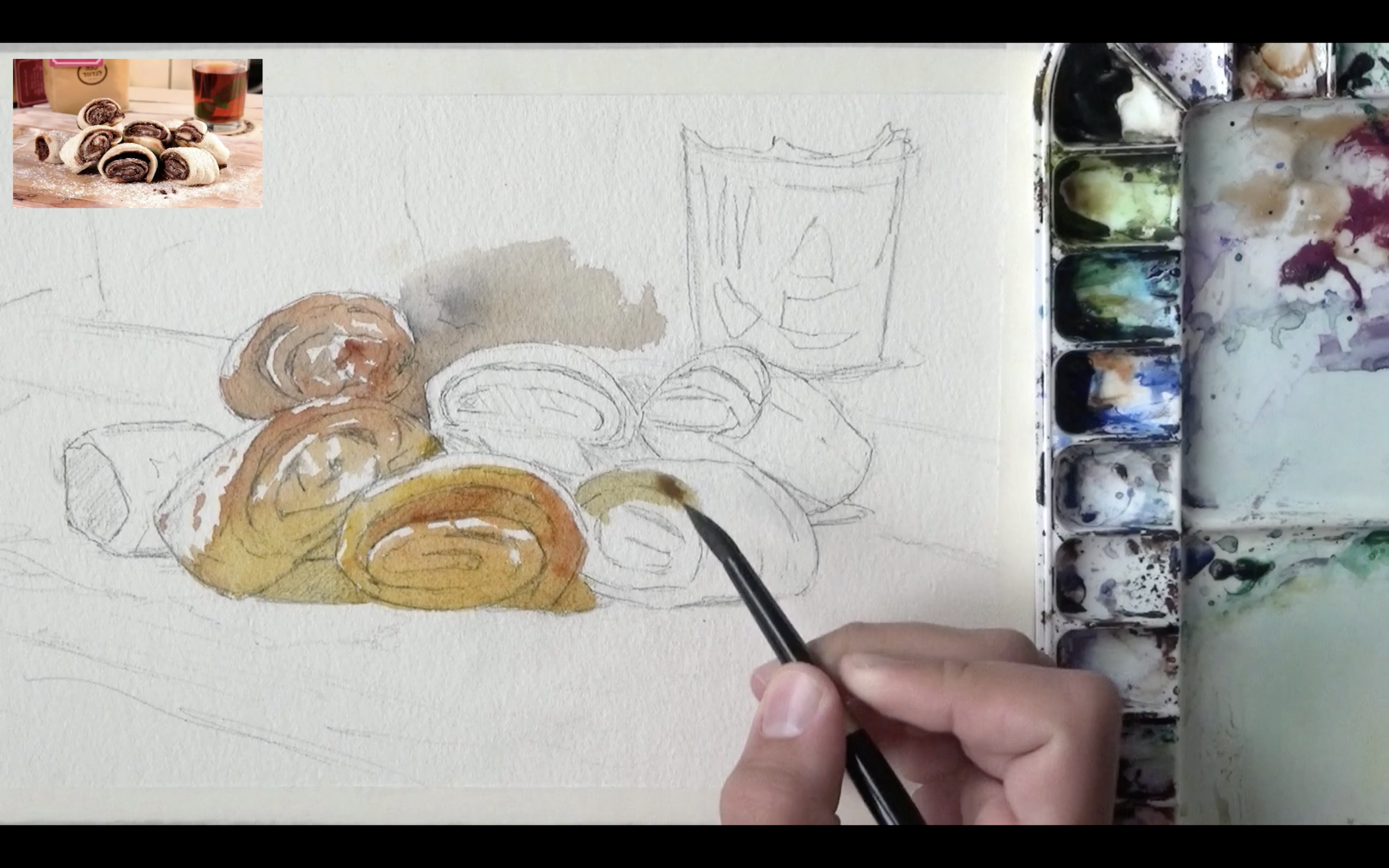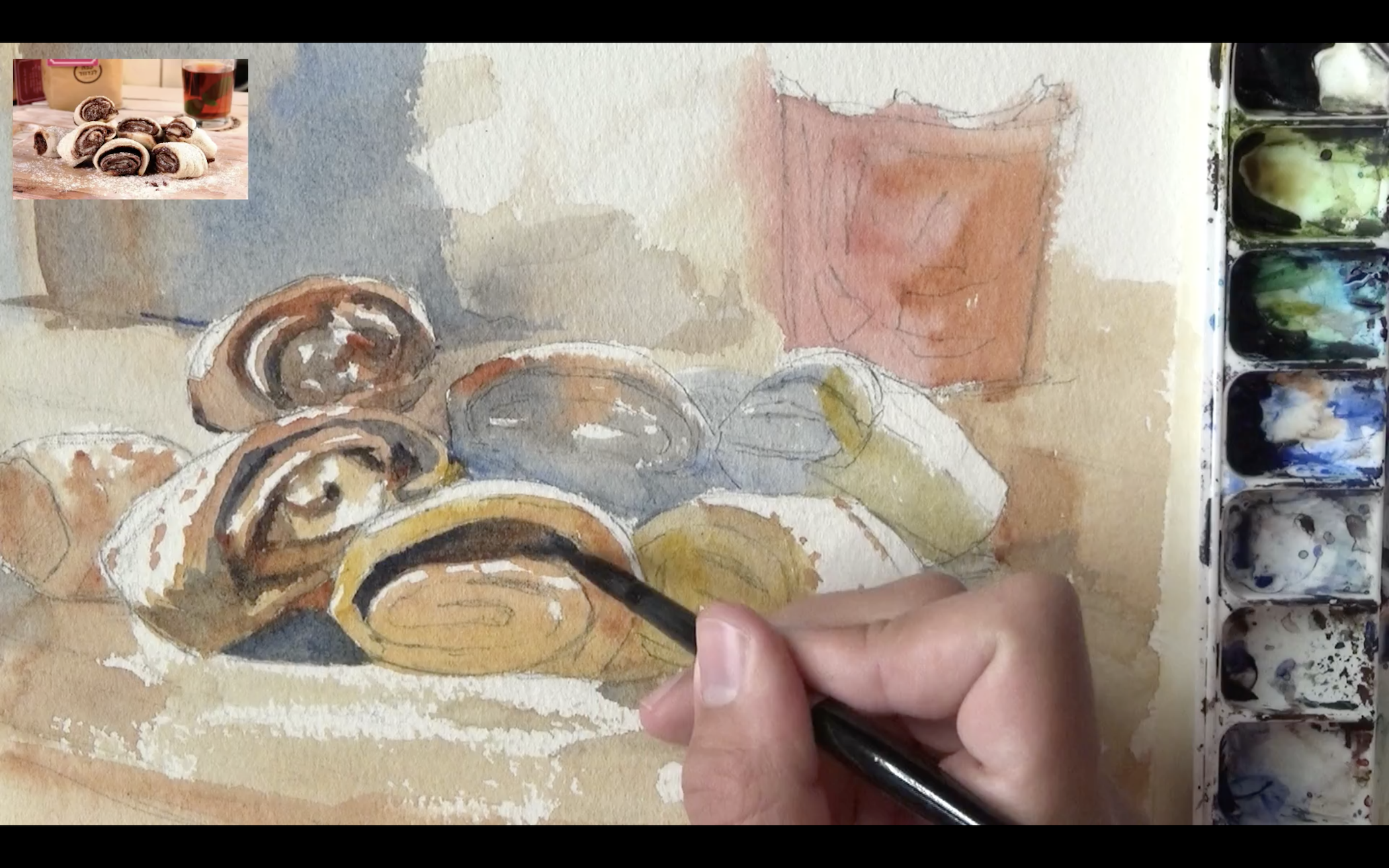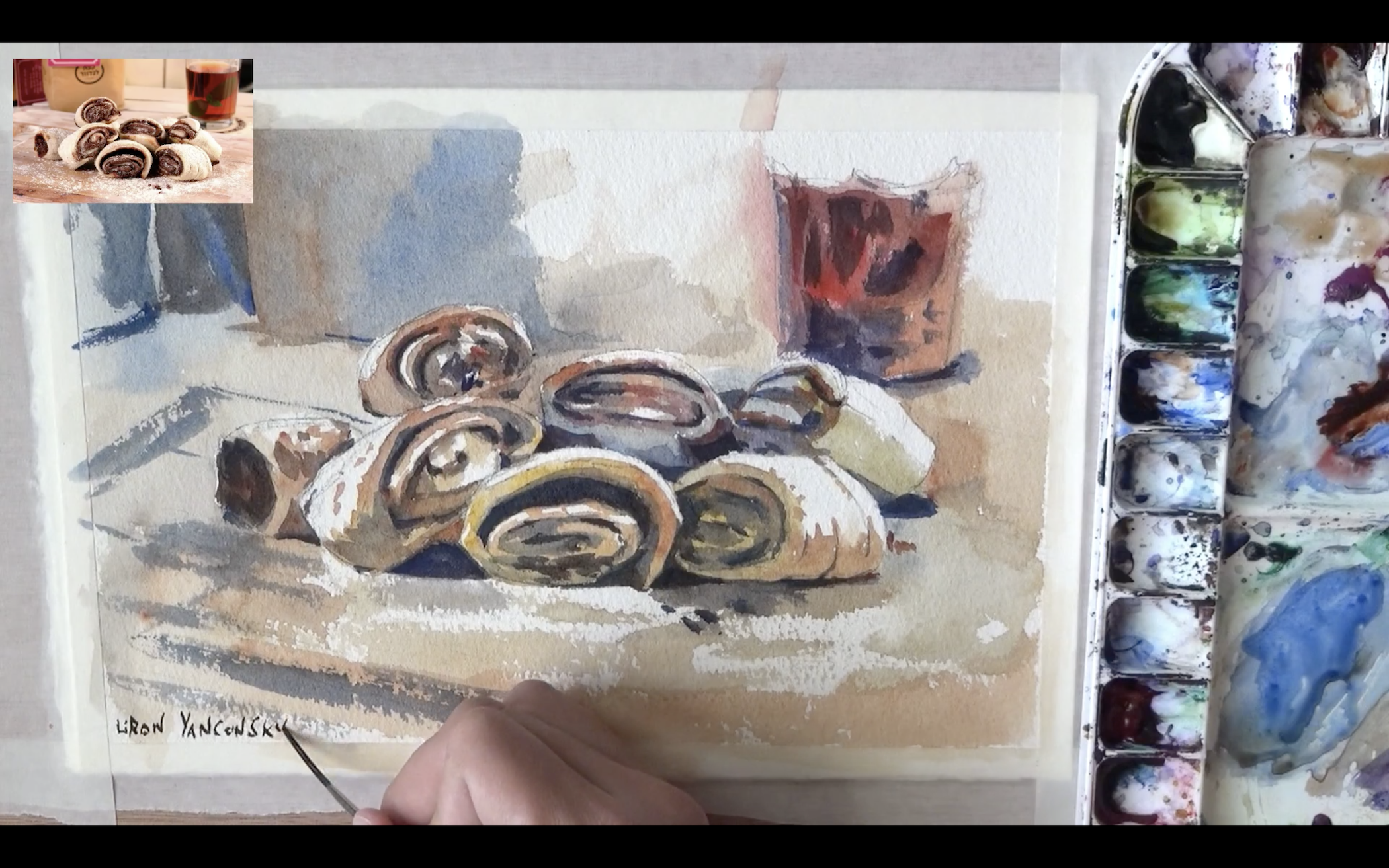Hi there! Today I want to quickly let you know about my favorite watercolor paper(s).
This really is a personal matter, so don’t worry if our opinions are different. That’s what opinions are for (;
Here’s the full video. For a written version, read on.
In Watercolor, Paper’s IMPORTANT
I want to preface this by saying that paper really matters when it comes to watercolor painting. It has to be of good quality.
I find that I can work well with simple brushes and ok paints. But the paper is crucial for success.
Cold-Press VS Hot-Press
These are the two main watercolor paper types.
Hot-press paper has a soft surface. Paint tends to sit a little more on its surface, and may take a little longer to dry.
Cold-press paper has tooth, aka texture. It tends to be a little thirstier in my experience. It tends to absorb paint faster.
I am an absolute fan of cold-press.
I love the texture and tooth. It’s very forgiving, and holds paint very well. It can be used to create different effects and “dictate” the focus in a painting, by using dry brush techniques.
An Argument FOR Hot-Pressed Paper
There is something to be said of the merits of hot-press watercolor paper. This type of paper allows for smoother transitions and edges. It’s considered more suited for portrait painting, and for works that require finesse and accuracy (which makes sense).
I also find that it’s sometimes easier to blend and soften edges in hot-press paper, though you have to know what you are doing. You usually need to dry the brush a little more (as the paper is smoother and a little more moisture in the brush can cause paint to spread more easily).
Check out this video I did on blending and edge softening: Watercolor Blending and Edge Control
Weight of Your Watercolor Paper
Watercolor paper comes in different weights.
I think that the minimum is 300gsm (grams per square meter). Under that you are risking with dealing with major buckling, especially in larger sizes.
I actually love to use 600gsm paper, but it’s not a necessity. That’s me being spoiled haha.
Favorite Watercolor Paper Brands
I have two brands whom papers I love.
Arches and Saunders-Waterford.
These two actually feel REALLY THE SAME. I think I read once those are different lines of the same brand, thus the similarity. Though I don’t remember clearly.
These can take anything, multiple layers, lifting, scratching, whatever!
The paper I most commonly use in the last six months or so is Saunders-Waterford.
Sketchbooks
When in sketchbooks, it’s sometimes a challenge to find one with good paper.
My favorite would be an Arches paper organized as a sketchbook (haven’t seen Saunders-Waterford in that format.
However, there is a different type of sketchbook I like, and that is Canson Montval (and it’s not even cotton paper).
You can watch my review of it here:
Conclusion
I hope this gives you a clearer picture of the types of watercolor paper I love using. this

